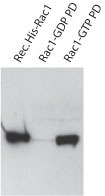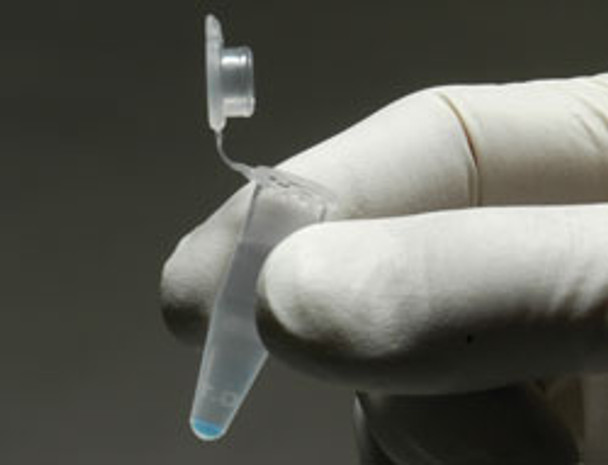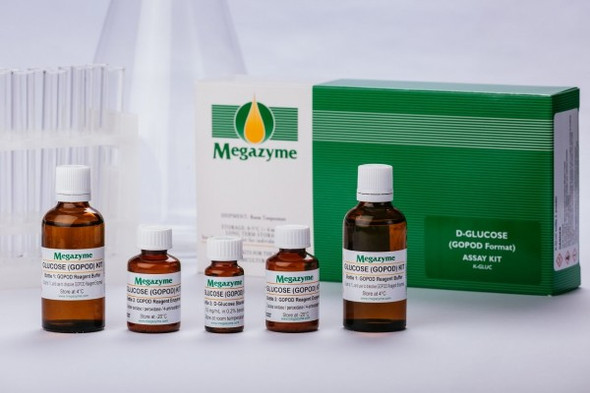Description
Rac1 Pull-Down Activation Assay Biochem Kit (Bead Pull-Down Format) | BK035
Product Uses Include
- Analysis of in vivo Rac1 activation levels.
- Detection of compounds and proteins that enhance Rac1 activity.
- Detection of compounds and proteins that inhibit Rac1 activity
Introduction
The Rho switch operates by alternating between an active, GTP-bound state and an inactive, GDP-bound state. Understanding the mechanisms that regulate activation / inactivation of the GTPases is of obvious biological significance and is a subject of intense investigation. The fact that many Rho family effector proteins will specifically recognize the GTP bound form of the protein has been exploited experimentally to develop a powerful affinity purification assay that monitors Rac and Cdc42 protein activation. The assay uses the Cdc42/Rac Interactive Binding (CRIB) region (also called the p21 Binding Domain, PBD) of the Cdc42 / Rac effector protein, p21 activated kinase 1 (PAK). The CRIB/PBD protein motif has been shown to bind specifically to the GTP-bound form of Rac and/or Cdc42 proteins. The fact that the PBD region of PAK has a high affinity for both GTP-Rac and GTP-Cdc42 and that PAK binding results in a significantly reduced intrinsic and catalytic rate of hydrolysis of both Rac and Cdc42 make it an ideal tool for affinity purification of GTP-Rac and GTP-Cdc42 from cell lysates. The PAK-PBD protein supplied in this kit corresponds to residues 67-150. This includes the highly conserved CRIB region (aa 74-88) plus sequences required for the high affinity interaction with GTP-Rac and GTP-Cdc42. The PAK-PBD is in the form of a GST fusion protein, which allows one to "pull-down" the PAK-PBD/GTP-Rac (or GTP-Cdc42) complex with glutathione affinity beads. The assay therefore provides a simple means of quantitating Rac or Cdc42 activation in cells. The amount of activated Rac is determined by a Western blot using a Rac-specific antibody.
Kit contents
The kit contains sufficient materials for 20 assays, depending on assay setup, and includes reagents for positive and negative controls. A larger 50 assay version of this kit is available as Cat. # BK035-S. The following components are included:
- GST-tagged PAK-PBD protein on colored agarose beads (Cat. # PAK02)
- Rac1 monoclonal antibody (Cat. # ARC03)
- His-tagged Rac1 protein (Cat. # RC01)
- GTPγS: (non-hydrolyzable GTP analog) (Cat. # BS01)
- GDP
- Cell lysis Buffer
- Wash Buffer
- Loading Buffer
- STOP Buffer
- Protease inhibitor cocktail (Cat. # PIC02)
- Manual with detailed protocols and extensive troubleshooting guide

Figure 1. The brightly colored glutathione agarose beads in BK035-S makes the kit easy to use.
Equipment needed
- SDS-PAGE minigel system and western blotting transfer apparatus
Example results
The Rac1 activation assay was tested by loading the Rac1 protein in cell lysates with either GTPγS or GDP. As expected, the GTPγS-loaded Rac1 is very efficiently precipitated while very little GDP-loaded Rac1 is precipitated (Fig. 2).

Figure 2. Results from BK035-S Rac1 activation assay. Activated Rac1 was precipitated and detected in a Western blot using kit BK035-S. The first lane shows a 50 ng recombinant His-tagged Rac1 standard (Recombinant His-Rac1). The following lanes shows the pull-down of inactive, GDP-loaded Rac1 (Rac1-GDP PD) or active, GTPγS-loaded Rac1 (Rac1-GTP PD) from equal amounts of cell lysates.









